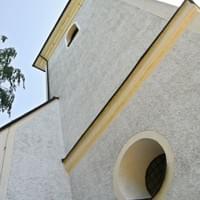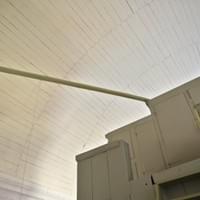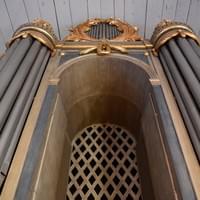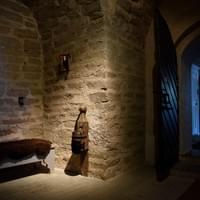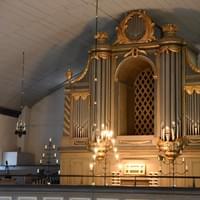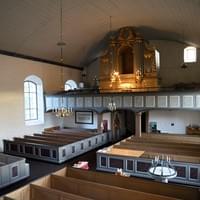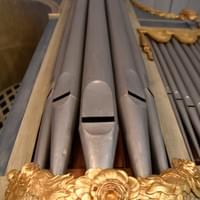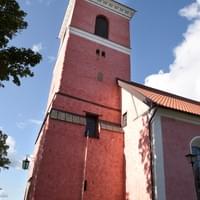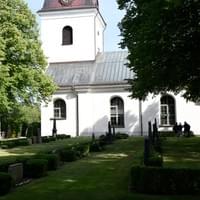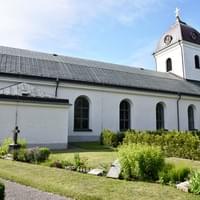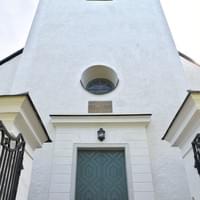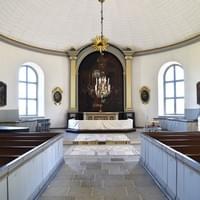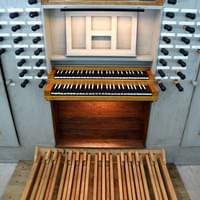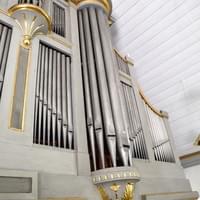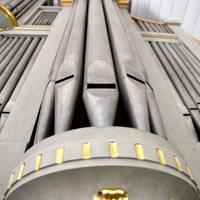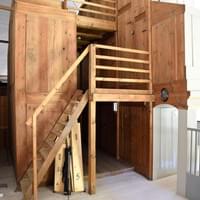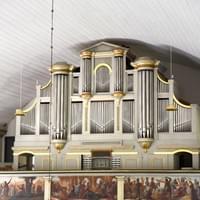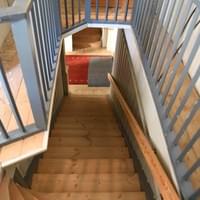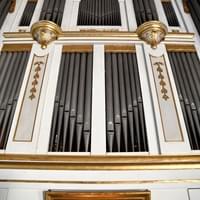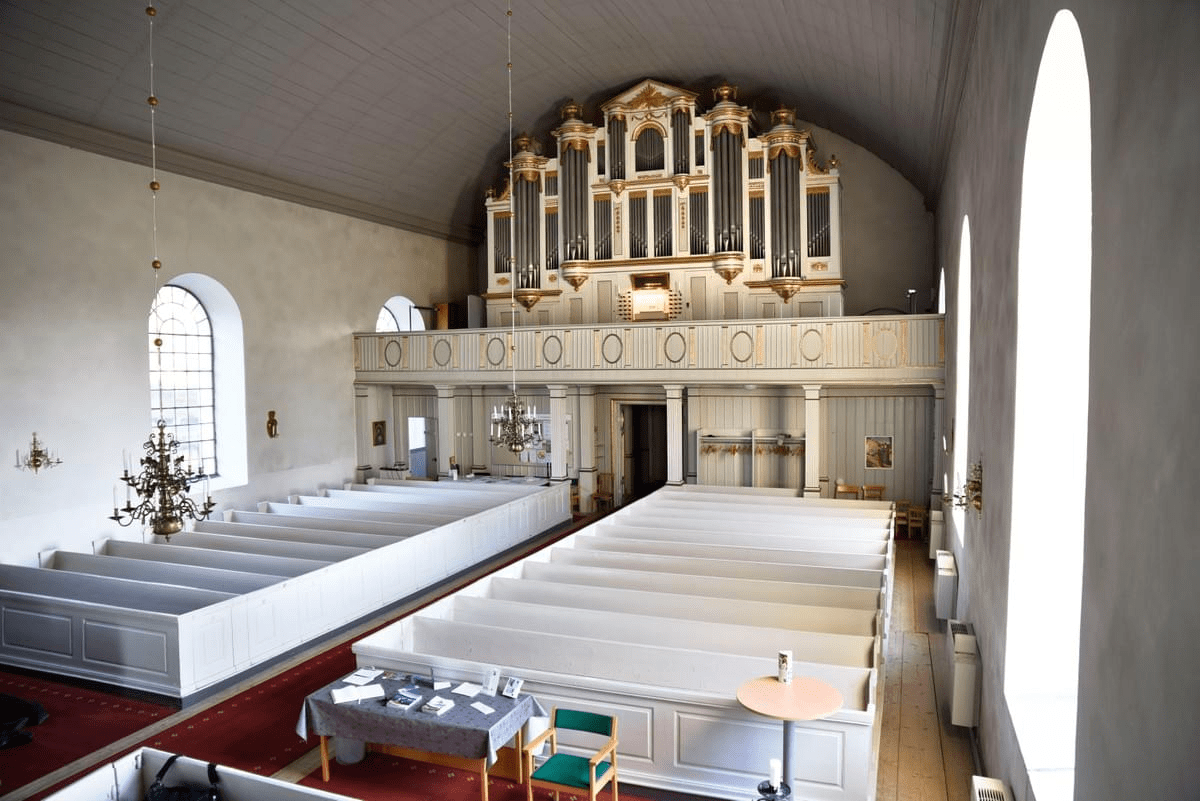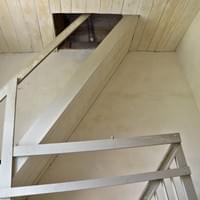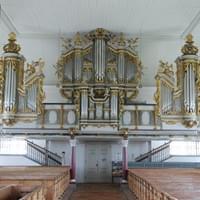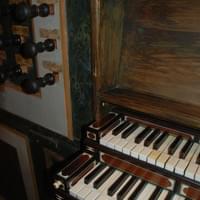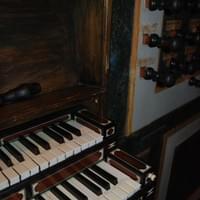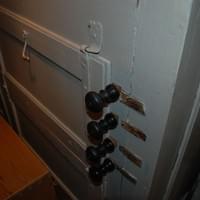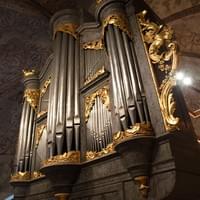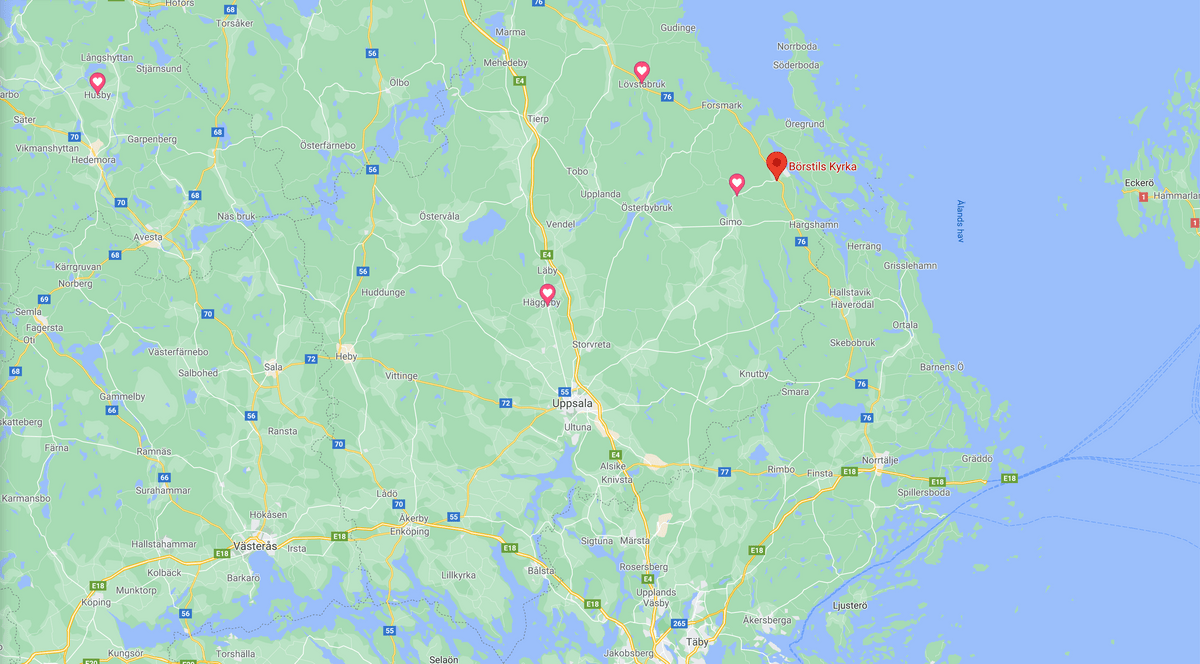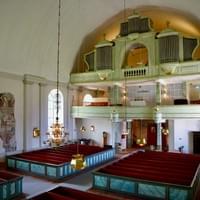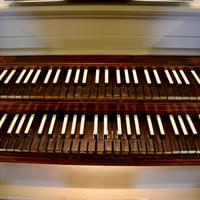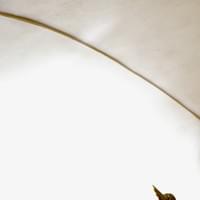
Swedish 18th-Century Organs
- A Unique Global Cultural Heritage
A Documentation Project in Ten Parts
Project management: Göteborg International Organ Academy Association

SWEDISH 18TH-CENTURY ORGANS IN AN OPEN DATABASE
In 2019 through 2022, the Göteborg International Organ Academy conducted a project with the aim of presenting a selection of Sweden’s best-preserved eighteenth-century organs in an open database. Each of the instruments is presented with detailed technical information, new audio and video documentation, interviews with organ experts as well as sounding musical examples provided by the organist Sietze de Vries, Groningen, the Netherlands.
Organ descriptions by Axel Unnerbäck (in English):
Pehr Schiörlin 1785 - Tryserum
Pehr Schiörlin 1806 - Gammalkil
Pehr Schiörlin 1815 - Rappestad
Johan Niclas Cahman 1704 - Kölingared
Johan Niclas Cahman 1728 - Lövstabruk
Olof Hedlund 1740 - Björklinge
Niclas Söderström 1783 - Dala Husby
Organ specifications:
Pehr Schiörlin 1785 - Tryserum
Pehr Schiörlin 1806 - Gammalkil
Pehr Schiörlin 1815 - Rappestad
Johan Niclas Cahman 1704 - Kölingared
Johan Niclas Cahman 1728 - Lövstabruk
Olof Hedlund 1740 - Björklinge
Niclas Söderström 1783 - Dala Husby
BACKGROUND
Sweden possesses a unique treasure of preserved organs from the eighteenth century – an important, but relatively little known cultural heritage. The majority of the instruments were built by Johan Niclas Cahman (ca. 1680–1737), Pehr Schiörlin (1736–1815) and Olof Schwan (1744–1812). Cahman and Schwan had their workshops in Stockholm, whereas Schiörlin was a resident of Linköping.
In the second half of the 1990s and the first years of the new millennium, the organ research center, GOArt (Göteborg Organ Art Center), at the University of Gothenburg collaborated with the Swedish National Heritage Board on a joint nation-wide organ project with the aim of creating a plan for the preservation of the country’s historic organs. A central part of this project was a detailed technical documentation of a selection among the best-preserved instruments. It is the result of this project that constitutes the core of the material to be digitized within the present project. One-third of these documentations (Slaka, Tryserum, and Kölingared) were financed by the National Heritage Board.
The project is funded by the Swedish Heritage Board (Riksantikvarieämbetet, RAÄ).
AIM
The aim of the project has been to make the material from these documentations, together with sound files and video “walk–throughs,” accessible in the GOArt database. This enables even very detailed information, such as measurements, proofs, drawings, etc., to be stored and accessed, using an interface designed to be attractive and easy to use for members of the public with an interest in cultural history.
GOAL
The overarching goal of the project has been to publish an open online database including documentations of a number of Swedish eighteenth-century organs, which will, in addition, be presented in recorded sound and moving pictures.
Project Overview
Part 1. Pehr Schiörlin 1785 - Tryserum
Part 2. Pehr Schiörlin 1783 - Slaka
Part 3. Pehr Schiörlin 1806 - Gammalkil
Part 4. Pehr Schiörlin 1815 - Rappestad
Part 5. Johan Niclas Cahman 1704 - Kölingared
Part 6. Johan Niclas Cahman 1728 - Lövstabruk
Part 7. Olof Hedlund 1740 - Björklinge
Part 8. Olof Schwan 1783 - Hökhuvud
Part 9. Olof Schwan 1783 - Börstil
Part 10. Niclas Söderström 1783 - Dala Husby
Part 1 of 10
Pehr Schiörlin 1785 - Tryserum
The organ was built the same year as Tryserum's church, in 1785, by Pehr Schiörlin and is considered one of his best works. It is virtually untouched and only minor adjustments have been made.
Walkthrough presentation of the organ by Hans Davidsson
Conversation held in Swedish
Organ stop presentation and improvisation at the organ by Sietze de Vries
Conversation held in English
Recording, mix & mastering Albert Jan de Boer
Organ tuning Sander Booij
Meet the Schiörlin organ care takers and supporters in Tryserum
Conversation held in Swedish
GIOA Podcast - On Organ Tour with Axel Unnerbäck
- On the organ in Tryserum, built by Pehr Schiörlin in 1785
Meet Axel Unnerbäck, organ researcher and for many years responsible for organ issues within the Swedish Heritage Board (Riksantikvarieämbetet, RAÄ), in conversation with Hans Davidsson, artistic director, GIOA
Conversation held in Swedish
Organ Inventory
Pehr Schiörlin 1785 - Tryserum
Part 2 of 10
Pehr Schiörlin 1783 - Slaka
On January 16, 2005, Pehr Schiörlin's only organ with arcade facade, originally built in 1783 in Slaka church, was re-inaugurated - being the oldest preserved arcade organ in Sweden as well.
Walkthrough presentation of the organ by Niclas Fredriksson
Conversation held in Swedish
Organ stop presentation and improvisation at the organ by Sietze de Vries
Conversation held in English
Recording, mix & mastering Albert Jan de Boer
Organ tuning Sander Booij
Meet organ experts Axel Unnerbäck and Niclas Fredriksson in a conversation with Lars Storm, project manager, GIOA
Conversation held in Swedish
Organ Inventory
Pehr Schiörlin 1783 - Slaka
Map

Part 3 of 10
Pehr Schiörlin 1806 - Gammalkil
The organ in Gammalkil, built by organ builder Pehr Schiörlin, Linköping, is one of Sweden's most famous. Here, among others, Professor Albert Schweitzer played both 1927 and 1951. It was overseen in 1806 by the cathedral organist Zacharias Köhler, Linköping, and was then found to be in perfect order according to the inspection protocol. According to a statement by Baron Israel Lagerfelt at nearby Lagerlunda, Gammalkil now had "the largest and best organ work in the diocese, perhaps the entire country's rural churches".
Walkthrough presentation of the organ by Hans Davidsson, Artistic Director, Göteborg International Organ Academy
Conversation held in Swedish
Organ stop presentation and improvisation at the organ by Sietze de Vries
Conversation held in English
Recording, mix & mastering Albert Jan de Boer
Organ tuning Sander Booij
Meet organ experts Axel Unnerbäck and Niclas Fredriksson in a conversation with Lars Storm, project manager, GIOA
Conversation held in Swedish
Meet Hans Davidsson, who invites us to an interpretation of Felix Mendelssohn-Bartholdy's sonata for organ No 1 in f minor, op. 65, at the Schiörlin organ in Gammalkil.
Conversation held in English
Meet Hans Davidsson, who invites us to an interpretation of Felix Mendelssohn-Bartholdy's sonata for organ No 6 in D major, op. 65, at the Schiörlin organ in Gammalkil.
Conversation held in English
Organ Inventory
Pehr Schiörlin 1806 - Gammalkil
Part 4 of 10
Pehr Schiörlin 1815 - Rappestad
Pehr Schiörlin is regarded as the foremost representative of the organ building tradition of the Eastern part of Sweden and, alongside Olof Schwan, was the leading champion of his time. The organ in Rappestad's church was completed after Pehr Schiörlin's death by his son Jonas Fredric Schiörlin in 1815.
Walkthrough presentation of the organ by Niclas Fredricsson
Conversation held in Swedish
Organ stop presentation and improvisation at the organ by Sietze de Vries
Conversation held in English
Recording, mix & mastering Albert Jan de Boer
Organ tuning Sander Booij
Meet organ experts Axel Unnerbäck and Niclas Fredriksson in a conversation with Lars Storm, project manager, GIOA
Conversation held in Swedish
Organ Inventory
Pehr Schiörlin 1815 - Rappestad
Part 5 of 10
Johan Niclas Cahman 1704 - Kölingared
The organ in Kölingared is one of Niclas Cahman's best known remaining organs, which was originally made for Mariestad in 1704-1705 but moved to Kölingared in 1864.
Walkthrough presentation of the organ by Hans Davidsson
Conversation held in Swedish
Organ stop presentation and improvisation at the organ by Sietze de Vries
Conversation held in English
Recording, mix & mastering Albert Jan de Boer
Organ tuning Sander Booij
Meet the Cahman organ care takers and supporters in Kölingared
Conversation held in Swedish
Organ Inventory
Johan Niclas Cahman 1704 - Kölingared
Part 6 of 10
Johan Niclas Cahman 1728 - Lövstabruk
On the balcony above the entrance to the south stands a magnificent pipe organ from 1728, built by Johan Niclas Cahman and Sweden's largest of its kind from the Baroque.
Walkthrough presentation of the organ by Hans Davidsson
Conversation held in Swedish
Organ stop presentation and improvisation at the organ by Sietze de Vries
Conversation held in English
Recording, mix & mastering Albert Jan de Boer
Organ tuning Sander Booij
Meet the Cahman organ care takers and supporters in Lövstabruk
Conversation held in Swedish
Organ Inventory
Johan Niclas Cahman 1728 - Lövstabruk
Photo: Niclas Fredriksson
Part 7 of 10
Olof Hedlund 1740 - Björklinge
Olof Hedlund was a disciple from 1721 with Johan Niclas Cahman and in 1740 built the organ in Björklinge church, which was donated to the church by its patron Otto Fleming.
Walkthrough presentation of the organ by Hans Davidsson
Conversation held in Swedish
Organ stop presentation and improvisation at the organ by Sietze de Vries
Conversation held in English
Recording, mix & mastering Albert Jan de Boer
Organ tuning Sander Booij
Meet organ expert Axel Unnerbäck in a conversation with Lars Storm, project manager, GIOA
Conversation held in Swedish
Organ Inventory
Olof Hedlund 1740 - Björklinge
Part 8 of 10
Olof Schwan 1783 - Hökhuvud
Olof Schwan built the organ in 1783, together with Mattias Swahlberg the younger, from Stockholm. In 1857 the organ was rebuilt by Carl Eric Granlund, Enköping, when the parts Qvinta 3 and Scharf III were replaced with Fugara 8 'and Fleut d'Amour 8'. In 1936 the organ was preserved by Olof Hammarberg, Gothenburg.
Walkthrough presentation of the organ by Hans Davidsson
Conversation held in Swedish
Organ stop presentation and improvisation at the organ by Sietze de Vries
Conversation held in English
Recording, mix & mastering Albert Jan de Boer
Organ tuning Sander Booij
Meet organ expert Axel Unnerbäck in a conversation with Lars Storm, project manager, GIOA
Conversation held in Swedish
Organ Inventory
Olof Schwan 1783 - Hökhuvud
Part 9 of 10
Olof Schwan 1783 - Börstil
Organ builder Olof Schwan (1744-1812), Stockholm, built a one-manual organ work with a side pedal in the stands. Facade after drawing by the conductor and illustrator Jacob Wulff (1750-1800). The pipes of the Turelles were noisy, the other facade pipes were mute. According to a note in the organ house, the organ was inaugurated on September 29, 1783. The original outline is unknown, but according to an inventory in 1829 and according to Sundberg & Björkman in 1869, there were 13 stops alltogether.
Walkthrough presentation of the organ by Hans Davidsson
Conversation held in Swedish
Organ stop presentation and improvisation at the organ by Sietze de Vries
Conversation held in English
Recording, mix & mastering Albert Jan de Boer
Organ tuning Sander Booij
Photo Gallery Börstil Church
Photos by Orgelanders
Organ Inventory
Olof Schwan 1783 - Börstil
Part 10 of 10
Niclas Söderström 1783 - Dala Husby
On the upper grandstand is one of Sweden's largest preserved organ works from the latter part of the 18th century. The local organist Niclas Söderström was commissioned to build his own organ in 1783. It became so successful that Söderström then devoted himself to organ building. The organ is extra interesting while it is built by Johan Niclas Cahman's spirit, as well as the contemporary Stockholm organs. While the latter were often demolished or radically rebuilt, the organ in Husby leaves in peace and it is today one of Sweden's best-preserved 18th century organs. After a complete renovation paid for with funds raised, the organ could be reopened on March 20, 2011.
Walkthrough presentation of the organ by Hans Davidsson
Conversation held in Swedish
Organ stop presentation and improvisation at the organ by Sietze de Vries
Conversation held in English
Recording, mix & mastering Albert Jan de Boer
Organ tuning Sander Booij
Meet organ experts Axel Unnerbäck in a conversation with Lars Storm, project manager, GIOAConversation held in Swedish
Meet organist Sietze de VriesConversation held in English
Meet organ builder and organist Sander Booij
Conversation held in English
Meet custodian Lollo Hedlund
Conversation held in Swedish
Organ Inventory
Niclas Söderström 1783 - Dala Husby
Map
Project Overview
Part 1. Pehr Schiörlin 1785 - Tryserum
Part 2. Pehr Schiörlin 1783 - Slaka
Part 3. Pehr Schiörlin 1806 - Gammalkil
Part 4. Pehr Schiörlin 1815 - Rappestad
Part 5. Johan Niclas Cahman 1704 - Kölingared
Part 6. Johan Niclas Cahman 1728 - Lövstabruk
Part 7. Olof Hedlund 1740 - Björklinge
Part 8. Olof Schwan 1783 - Hökhuvud
Part 9. Olof Schwan 1783 - Börstil
Part 10. Niclas Söderström 1783 - Dala Husby
The specifications of the organs (and all documents related to them) can be found in the Swedish 18th-Century Organ Database. Here you will find a text and in the first paragraph see the hyperlink ‘open database’, which brings you to the database. Somewhat further below in the same text you will find hyperlinks to the organ specifications (‘organ specifications’) and to the complete organ descriptions in English by Axel Unnerbäck (‘Unnerbäck’s organ descriptions’). All other text documents which you can access through the hyperlink ‘open database’ are in Swedish, but there are also drawings and photographs).
Surface Mail
GIOA c/o Hans Davidsson
Klövervägen 17
475 37 Bohus-Björkö
A World of Tactile Passion and New Sounds - for All!
© 2025 Göteborg International Organ Festival & Göteborg International Organ Academy
COMMUNICATION PLATFORM









